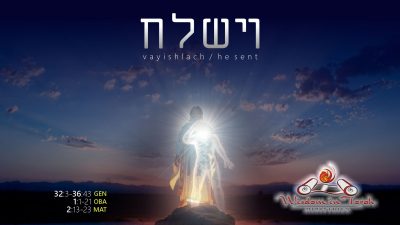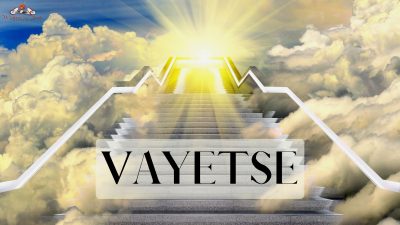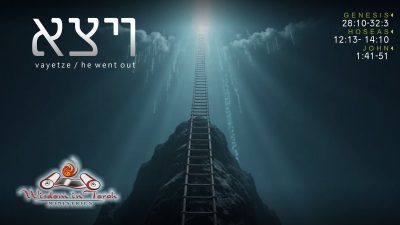
Don't Forget to Share!
This Parashah covers the instructions for first fruits offerings, the building of the altar on Mt. Ebal, and the blessings and curses ceremony.
Sometimes there are times when we just need to read and learn how to Hear and Obey. This portion is about learning that disobedience brings serious consequences.
This week's Torah Portion has multiple topics , underlying themes and legal principles within just a little over 3 Chapters. These chapters are focusing on the Royal Land Grant as Israel is getting ready to cross the Jordan to take possession of the Land promised by OUR Suzerain YHWH to Abraham and his descendants.
Have you ever wondered why..
Israel was to set up the stones at Mount Ebal and Mount Gerizim?
What exactly were those stones?
What are the legal concepts in Covenant Making behind "garments" and "sandals" in Scripture and Ancient Near East?
Is the legal language of the garments and sandal found in the First Century Writings?
We will investigate the answers to these questions so we will be able to recognize just how much even the smallest of detail in certain verses ties into Scripture being a legal Constitution to the Commonwealth of Israel.
We will also discuss discuss the importance of justice and righteousness and our mandate to not pervert justice and how important this is in light of all the doom & gloom end-times predictions that are plaguing the HR movement.
This page includes Torah Portions from multiple years covered by Wisdom in Torah. Each year we covered the Torah from a different perspective so you can explore each Parashah from a different perspective and focus.
- 2010 Portions: Focus on Messianic connections in the Parashah
- ANET Portions: Focus on the ancient Near Eastern cultural context of the Parashah
- Mitzvot Portions: Focus on explaining and exploring the commandments found in the Parashah (in progress)
- 2015 Portions: Revisiting the Parashah looking at the ancient cultural context more in depth with additional areas that have been researched
- Brit Portions: Focus on connecting the Brit Hadashah (New Testament) to the Parashah
Oops, this is members-only content
This page requires at least a basic level membership to access the teaching.
Audio
Oops, this is members-only content
Resources
The following is a list of recommended resources for this teaching:
Categories
41 thoughts on “Torah Portion Ki Tavo Complete”
Leave a Comment
You must be logged in to post a comment.







I so enjoyed studying Ki Tavo with you! It was wonderful, and I learned a lot, I especially like the cross referencing you do, it makes the word hit home!
The flute player who led the procession at the ceremony of the water-pouring, was called “The Pierced One” because of his flute which had 5 piercings. Our Messiah also had 5 piercings.
Shalom Rico,
I know that you are tremendously busy, and we appreciate all that you have done to bring us the Torah portion each week!! We have high-speed internet, but we still could not get the videos to work correctly, so we listened to the audio…but…the “pause” button on Part 1 did not work, and when I tried to stop it so that I could take some notes, it automatically went right back to the very beginning of the teaching, and since there is no option to be able to rewind or fast forward, we were kind of stuck at that point, having to start all over again. I’m not sure what has to be done on your end to fix those issues, but we certainly want to be able to finish listening to your teaching!!!
Thanks for your time!!! Hope you and the family are blessed and well!
Mike & Donna Colo’n
Rico,
The Torah tells us that Moshe went up to Mt. Sinai for 40 days and nights not once but twice to commune with YHWH. The Written Torah was given to him at this time but also the Oral Torah. I am not speaking of the additional “fences” put in place by the rabbis in the time of Shammai and Hillel or even since. YHWH instructed him to write down all the most important points of the Torah almost as a power point presentation today. But the sages teach that He also expounded on them and taught Moshe all the finer points as they communed with each other. Anyone who studies only the Written Torah and not too, the Oral, will find that somethings just cannot be understood completely. Case in point, Moshe wrote about the Temple Sacrifices and what animals were to be used, but where does it tell us HOW they are to be slaughtered? How did Aaron and his son’s know exactly how to perform this. How did Aaron know to cut only the carotid artery (or for that matter what a carotid artery was) and let the animals heartbeat quickly allow all the blood to be drained out with minimal pain or suffering to the animal, and not to slice through the whole throat, as some have taught, which causes the animals blood to gush into their lungs causing them to drown and choke, not allowing for Mercy? It is because YHWH gave the Power Point and then explained them in a conversation with Moshe. In today’s Parasha Devarim 26:17 says “…and to hearken to His Voice”. This is speaking to these finer points which we learn about in the “traditions” spoken about by the sages when they refer to the Oral Torah. There are many more things, as you say, about how to keep the Feasts and Temple Sacrifice’s which are not written down, but only explained. How did the people know to use a string or piece of reed to set apart the firstfruits and barley, where did they get this from? We need to see that there are two sticks in a Torah Scroll, two colors, black and white, and Yahushua’s spoken words written in Red are the very epitome of Oral Torah. I too believe we need to search out the writings of the sages to get more understanding; always using descernment . What facinating things are being revealed by the Ruach in our days!!!
Shalom.
In your comments about the altars being built at different times, you mentioned that one was not built when Israel was reborn in 1948. This is an interesting concept. Why do you think it was not done? No Levites or Priests?
both videos stop continually! Why? Never happened before…
Thanks Rico, You gave me a good starting point for research concerning methods of temple service during the times when the temple was not present. if you have any more tips for research send them my way. Shabbat Shalom
I am wondering if the 3rd year, the year of tithing, was the 3rd year of the 7 year cycles instead of every 3 years regardless of its position in the 7 year cycle. Any clarification/thoughts on this?
upon further review I see Rico did say 3rd and 6th year of 7 year cycle. But also said every 3rd year which confused me bit.
The video in Part I stops at 40 min. 5 sec. Is anyone else having trouble with it?
Just a question for Rico.
Each Erev Shabbat our Torah study group meets to share a meal and to have a teaching. We always begin with the candle lighting, the blessing of the bread and the blessing of the fruit of the vine etc. and I have always made a Challah loaf to break and share.Recently a visitor who was a guest at the meal suggested that it was not correct to use bread which has leven in it, as Yeshua was without sin (leven).We do use a blessing which says “Who blesses us with bread from the earth, and gives us Yeshua, Who is the bread of Life.” Are we in error to have bread with leven in it for the celebration? Your advice would be appreciated.
Blessing to you and your ministry Rico. We always listen to your Torah Portions and other teachings.
Shalom Patricia Goodwin
Shalom
No no problem with the bread for shabbat but only for passover do not have regular bread.
ok, I am a bit confused (please excuse my ignorance) – is it right to give a weekly 10% based on your paycheck income? (I’m not talking about a freewill offering).
By the way Rico those people still use the first fruit scam to gather in the money